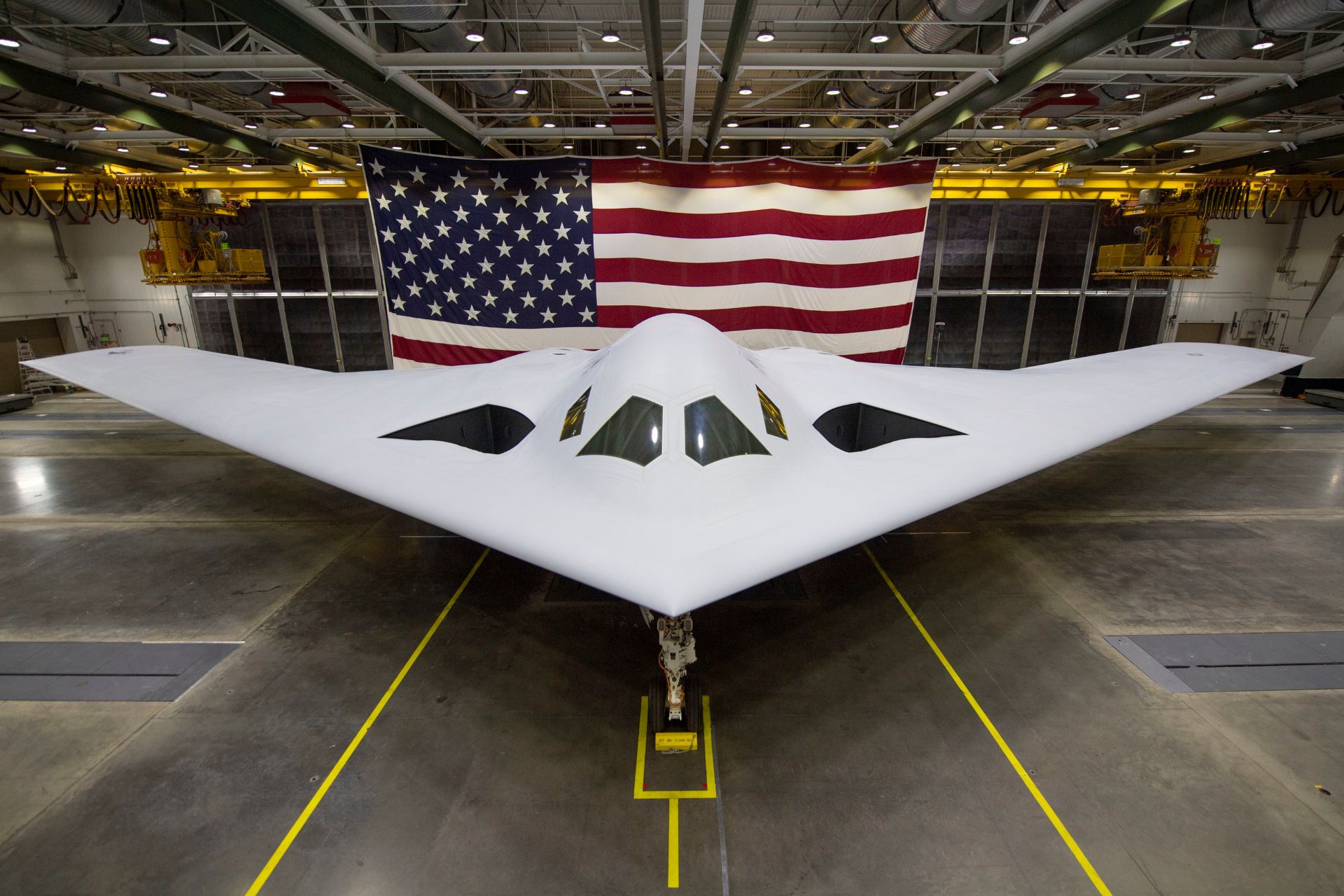US Technological Gamble with B-21 Raider Bomber and F-47 Fighter Jet to Sustain Air Superiority

{loadposition bannertop}
{loadposition sidebarpub}
The United States is accelerating its strategic posture in military aviation with the development of the B-21 Raider and the F-47, two key assets of the emerging sixth generation of aircraft designed to secure American air superiority in response to China’s growing military capabilities. This strategy reflects the Pentagon’s intention to reshape its power projection and deterrence tools for the coming decades, at a time when the strategic balance in the Indo-Pacific and other regions could be redefined by technological competition. A recent article published by Fox News titled Inside America’s 6th-gen arsenal: B-21, F-47 and the future of air dominance details these ambitions and the related industrial and strategic choices.Follow Army Recognition on Google News at this link
The B-21 Raider and F-47 are not merely technological advancements; they reflect a strategic necessity in the face of China’s advancing air power (Picture source: US DoD)
The B-21 Raider, developed by Northrop Grumman under the direction of the Air Force’s Rapid Capabilities Office, forms the cornerstone of the future U.S. bomber fleet, which will consist of a mix of B-21s and upgraded B-52s. The B-21 is a stealth bomber designed for deep penetration in highly contested threat environments. It is capable of delivering both conventional and nuclear weapons. As part of a broader long-range strike family of systems, the B-21 integrates intelligence, surveillance, and reconnaissance capabilities, electronic warfare, and communications. It is designed for both crewed and uncrewed operations. Its open systems architecture is intended to facilitate updates and modernization to adapt to evolving threats.
The program dates back to 2015 when Northrop Grumman was awarded the development contract, supported by industry partners including Pratt & Whitney for propulsion, Janicki Industries, Collins Aerospace, GKN Aerospace, BAE Systems, and Spirit Aerosystems. A successful critical design review was completed in 2018, and in 2019, three main operating bases were designated: Ellsworth AFB in South Dakota, Whiteman AFB in Missouri, and Dyess AFB in Texas. In 2021, Ellsworth was confirmed as the first main operating base and formal training unit location. Combined testing is being conducted at Edwards Air Force Base in California, while heavy maintenance planning is assigned to Tinker Air Force Base in Oklahoma. The aircraft is named in honor of the Doolittle Raiders, known for their 1942 raid on Tokyo. The average procurement cost is set at $692 million (2022 dollars), with the U.S. Air Force planning a minimum of 100 operational aircraft starting in the mid-2020s.
In parallel, the development of the F-47, awarded to Boeing, represents the U.S. response to the emergence of China’s sixth-generation fighters, the Chengdu J-36 and Shenyang J-50. The F-47 is designed as a sixth-generation multirole fighter to replace the F-22 Raptor and become the core of a new air combat ecosystem. It combines stealth features, adaptive cycle propulsion, advanced avionics, and the centralized command of a fleet of autonomous drones, the Collaborative Combat Aircraft (CCA). These drones will extend the F-47’s capabilities by deploying sensors, electronic warfare payloads, and precision munitions in contested environments.
The F-47 is intended for operations within anti-access/area-denial (A2/AD) environments, leveraging its advanced stealth and deep penetration capacity to challenge Chinese air dominance in the Indo-Pacific. It integrates native digital systems and AI-assisted pilot support for real-time decision-making in sensor-dense battlespaces. Its adaptive cycle engine, or fusion engine, provides improved thermal management, extended range, and high-speed performance exceeding Mach 2, surpassing fifth-generation fighters.
The F-47’s networked architecture allows it to centralize and redistribute intelligence and targeting data via a secure battlefield cloud, coordinating up to 1,000 CCAs alongside 200 NGAD and 300 F-35 aircraft. This robust interconnectivity aims to deny the Chinese air force effective coordination across its networks, whereas the J-36 and J-50 reportedly still face challenges in achieving reliable interoperability. Unlike the Chinese platforms, the F-47 is being designed for seamless integration with NATO and allied systems, providing a comparative advantage in coalition operations.
China’s progress partly explains this strategic drive. The J-36 features a trijet configuration with tailless diamond-double-delta wings, optimized for stealth and long-range missions with drone coordination. It is reportedly equipped with advanced electronic warfare systems and possibly laser-based defensive technologies. The J-50, distinguished by its tailless lambda wing design and twin thrust-vectoring engines, is intended for carrier operations, enhancing China’s maritime strike capabilities.
In this context, the F-47 is considered essential to preserve U.S. freedom of action in potential conflict scenarios around Taiwan or the South China Sea. A loss of air superiority could prevent access to forward operating zones. Accordingly, the F-47 program, backed by a $3.5 billion investment in the 2026 budget, leverages an industrial network shaped by experiences from the F-35 and B-21 programs, particularly in modular design, digital twinning, and open architectures aimed at reducing lifecycle costs.
The B-21 Raider and F-47 are not merely technological advancements; they reflect a strategic necessity in the face of China’s advancing air power. As Chinese prototypes continue their testing, the United States seeks not just to match these capabilities but to maintain uncontested air dominance, which remains a critical factor in preserving its strategic influence globally.

{loadposition bannertop}
{loadposition sidebarpub}
The United States is accelerating its strategic posture in military aviation with the development of the B-21 Raider and the F-47, two key assets of the emerging sixth generation of aircraft designed to secure American air superiority in response to China’s growing military capabilities. This strategy reflects the Pentagon’s intention to reshape its power projection and deterrence tools for the coming decades, at a time when the strategic balance in the Indo-Pacific and other regions could be redefined by technological competition. A recent article published by Fox News titled Inside America’s 6th-gen arsenal: B-21, F-47 and the future of air dominance details these ambitions and the related industrial and strategic choices.
Follow Army Recognition on Google News at this link
The B-21 Raider and F-47 are not merely technological advancements; they reflect a strategic necessity in the face of China’s advancing air power (Picture source: US DoD)
The B-21 Raider, developed by Northrop Grumman under the direction of the Air Force’s Rapid Capabilities Office, forms the cornerstone of the future U.S. bomber fleet, which will consist of a mix of B-21s and upgraded B-52s. The B-21 is a stealth bomber designed for deep penetration in highly contested threat environments. It is capable of delivering both conventional and nuclear weapons. As part of a broader long-range strike family of systems, the B-21 integrates intelligence, surveillance, and reconnaissance capabilities, electronic warfare, and communications. It is designed for both crewed and uncrewed operations. Its open systems architecture is intended to facilitate updates and modernization to adapt to evolving threats.
The program dates back to 2015 when Northrop Grumman was awarded the development contract, supported by industry partners including Pratt & Whitney for propulsion, Janicki Industries, Collins Aerospace, GKN Aerospace, BAE Systems, and Spirit Aerosystems. A successful critical design review was completed in 2018, and in 2019, three main operating bases were designated: Ellsworth AFB in South Dakota, Whiteman AFB in Missouri, and Dyess AFB in Texas. In 2021, Ellsworth was confirmed as the first main operating base and formal training unit location. Combined testing is being conducted at Edwards Air Force Base in California, while heavy maintenance planning is assigned to Tinker Air Force Base in Oklahoma. The aircraft is named in honor of the Doolittle Raiders, known for their 1942 raid on Tokyo. The average procurement cost is set at $692 million (2022 dollars), with the U.S. Air Force planning a minimum of 100 operational aircraft starting in the mid-2020s.
In parallel, the development of the F-47, awarded to Boeing, represents the U.S. response to the emergence of China’s sixth-generation fighters, the Chengdu J-36 and Shenyang J-50. The F-47 is designed as a sixth-generation multirole fighter to replace the F-22 Raptor and become the core of a new air combat ecosystem. It combines stealth features, adaptive cycle propulsion, advanced avionics, and the centralized command of a fleet of autonomous drones, the Collaborative Combat Aircraft (CCA). These drones will extend the F-47’s capabilities by deploying sensors, electronic warfare payloads, and precision munitions in contested environments.
The F-47 is intended for operations within anti-access/area-denial (A2/AD) environments, leveraging its advanced stealth and deep penetration capacity to challenge Chinese air dominance in the Indo-Pacific. It integrates native digital systems and AI-assisted pilot support for real-time decision-making in sensor-dense battlespaces. Its adaptive cycle engine, or fusion engine, provides improved thermal management, extended range, and high-speed performance exceeding Mach 2, surpassing fifth-generation fighters.
The F-47’s networked architecture allows it to centralize and redistribute intelligence and targeting data via a secure battlefield cloud, coordinating up to 1,000 CCAs alongside 200 NGAD and 300 F-35 aircraft. This robust interconnectivity aims to deny the Chinese air force effective coordination across its networks, whereas the J-36 and J-50 reportedly still face challenges in achieving reliable interoperability. Unlike the Chinese platforms, the F-47 is being designed for seamless integration with NATO and allied systems, providing a comparative advantage in coalition operations.
China’s progress partly explains this strategic drive. The J-36 features a trijet configuration with tailless diamond-double-delta wings, optimized for stealth and long-range missions with drone coordination. It is reportedly equipped with advanced electronic warfare systems and possibly laser-based defensive technologies. The J-50, distinguished by its tailless lambda wing design and twin thrust-vectoring engines, is intended for carrier operations, enhancing China’s maritime strike capabilities.
In this context, the F-47 is considered essential to preserve U.S. freedom of action in potential conflict scenarios around Taiwan or the South China Sea. A loss of air superiority could prevent access to forward operating zones. Accordingly, the F-47 program, backed by a $3.5 billion investment in the 2026 budget, leverages an industrial network shaped by experiences from the F-35 and B-21 programs, particularly in modular design, digital twinning, and open architectures aimed at reducing lifecycle costs.
The B-21 Raider and F-47 are not merely technological advancements; they reflect a strategic necessity in the face of China’s advancing air power. As Chinese prototypes continue their testing, the United States seeks not just to match these capabilities but to maintain uncontested air dominance, which remains a critical factor in preserving its strategic influence globally.






